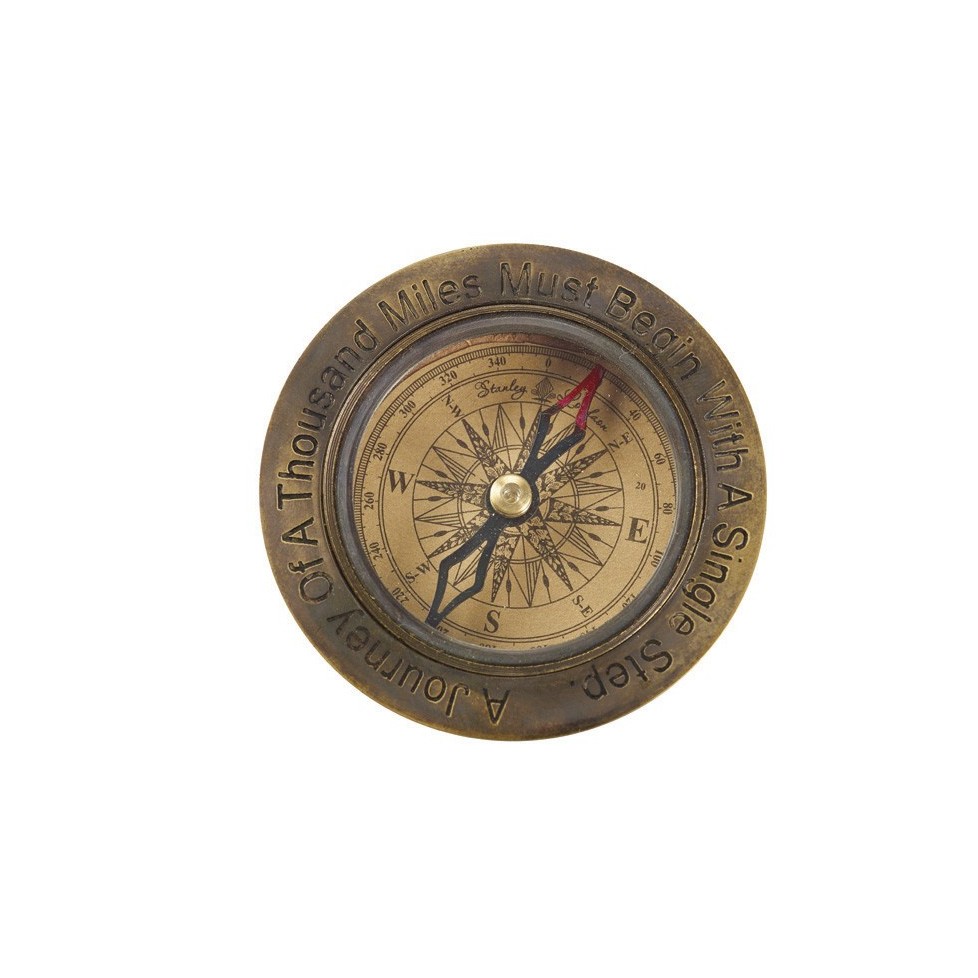

| Los pedidos realizados el día 25 de Julio, se procesarán el día 26 por fiesta local. |



Antiqued brass compass with lovely compass rose. Comes with navy blue velvet bag.
NAUTICAL COMPASS.
The compass (from the Latin "passus" ("step")) opened up the world to exploration and discovery. The principle of the magnetic needle was already known to the Chinese in the 3rd century BC and was first used by feng shui priests to tell them where and how to build. It was adapted to maritime navigation by Chinese sailors around the year 1000. The first compasses comprised a magnetic needle floating in a bowl of water, with the needle suspended on a thread or threaded through a reed. The Arabs perfected this by mounting the needle on a pivot. The compass arrived in Europe between the 10th and 11th centuries, enabling sailers to cross the oceans and explorers to discover the continents. The first instrument to resemble the modern compass is attributed to Portuguese citizen Ferrande (1483).
Antiqued brass compass with lovely compass rose. Comes with navy blue velvet bag.
Barometer whose sphere is made in plastic with a charming support made in MDF.
Elegant brass sandglass. It runs for around five minutes.
A perfect duo for lovers of meaningful little objects. These two aluminium compasses, one in black and the other in blue, feature a wind rose printed on the base — an eternal symbol of guidance and adventure. Ideal as a decorative detail, travel souvenir or thoughtful gift for those still searching for their own true north. The listed price is for the set...
Brújula en latón envejecido con una cajita de madera de palisandro decorada de un placa en latón.
Keychain pocket compass in nickel and whose background is decorated with a beautiful wind rose. Mounted with a carabiner clasp.
BRUNTON Pocket Transit compass. Working reproduction of the pocket transit compass invented by mining engineer D.W Brunton in 1894.Brass compass presented in lovely sheesham wood box with brass anchor motif inlay. The two rotating bubble levels give the declination angle reading. The needle is automatically blocked when the lid is closed.